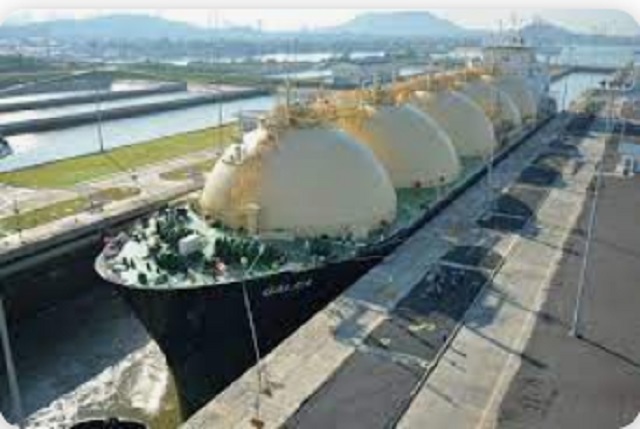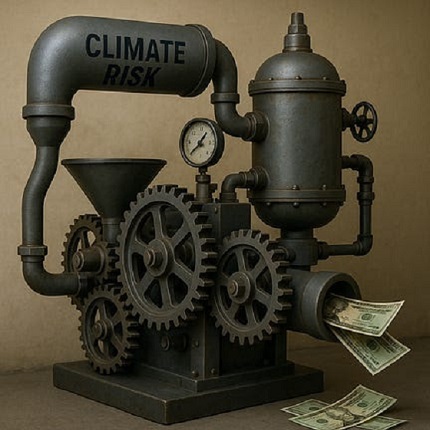Alberta
Cenovus replies to low-blow from Norway’s trillion dollar oil fund

From Cenovus Energy
Canada targeted (yet again) as a scapegoat for global climate change challenge
Alex Pourbaix, President & Chief Executive Officer, Cenovus Energy

The recent decision by the Norwegian wealth fund, Norges, to pull its investments in Cenovus Energy and three of our oil sands peers is another example of Canada being used as a pawn by institutions attempting to earn climate points. But these announcements are motivated more by public relations than fact. The data they used to assess Cenovus’s greenhouse gas performance is outdated and incorrect.
Here’s what Norges failed to consider in its decision. Cenovus has reduced the emissions intensity of our oil sands operations by approximately 30 percent over the past 15 years. We’ve set ambitious targets to reduce our per-barrel emissions by another 30 percent across our operations by 2030 and hold absolute emissions flat during that time. We are also focused on innovation that will help us achieve our aspiration of net zero emissions by 2050. Our peers have similar emissions reductions achievements and commitments.
The hypocrisy of the move by Norges is particularly rich, given the sovereign wealth fund amassed its $1 trillion value primarily from oil production profits. Moreover, Norway’s former energy minister is on record saying the country will produce oil for as long as oil is used. Energy is important to Norway’s economy, as it is to Canada’s.
The oil and natural gas industry accounts for the largest share of Canada’s exports and is the most significant contributor to the country’s gross domestic product. This country is amassing a huge deficit as a result of the COVID-19 response, with the parliamentary budget officer suggesting our national debt could hit $1 trillion. That’s more than $26,000 for every man, woman and child in Canada. Key to reversing this unprecedented debt load will be secure and stable tax revenue to support the economic recovery. Canada’s energy sector has contributed an average of $8 billion annually to provincial and federal government coffers and its strength is fundamental to ensuring this country emerges from the downturn stronger than ever.
Yet, the Canadian oil sands have become an easy target for primarily European investment firms and insurers who have made a big splash announcing they are severing ties with Canadian companies. Pulling out of the oil sands earns these firms headlines but doesn’t have an impact on their business because most of them were not heavily invested in Canada. Canada’s oil sands have long been the poster child for the anti-oil movement. It’s easier to attack a country that has a regulatory system designed to ensure transparency on its environmental, social and governance (ESG) performance than it is to go after oil producing nations such as Russia and Saudi Arabia where the commitment to regulation and transparency substantially lags Canadian expectations and standards.
As the leader of a Canadian company whose sector contributes billions to the national economy and directly and indirectly employs 800,000 people – including being the country’s largest employer of Indigenous people – I am standing up for our industry and for Canada. Enough is enough with these unwarranted attacks.
Cenovus and our peers are committed to doing our part to help meet Canada’s climate commitments and contribute to global climate change solutions. We’re investing millions in technologies to reduce our own emissions and collaborating with innovators around the world, including the support of initiatives like the NRG COSIA Carbon XPrize, which is focused on solutions to convert greenhouse gas emissions into valuable products and consumer goods.
Canada is the largest oil-producing jurisdiction in the world with a national price on carbon, and Alberta’s cap on oil sands emissions is an unprecedented commitment. Our industry is committed to achieving Canada’s 45 percent reduction target for methane emissions, addressing a greenhouse gas that is more potent than carbon dioxide. If investors are truly concerned about global greenhouse gas emissions, they should place greater value on Canadian oil and natural gas.
The world is undergoing an energy transition as action is taken to limit global temperature rise. Canada’s energy sector is going to play a key role in supporting the transition. But as we see today, energy and economic growth are inextricably linked and even the most aggressive emissions-reduction scenarios recognize that oil and natural gas will continue to be a significant part of the energy mix for decades to come. Canada has the world’s third largest oil reserves and a significant opportunity to provide the world with the low cost, lower carbon energy it demands.
Just as support for a strong energy sector has benefitted Norwegians, it’s essential for Canadians to recognize the importance of Canada’s energy sector in contributing to our collective economic future.
Alberta
The case for expanding Canada’s energy exports

From the Canadian Energy Centre
For Canada, the path to a stronger economy — and stronger global influence — runs through energy.
That’s the view of David Detomasi, a professor at the Smith School of Business at Queen’s University.
Detomasi, author of Profits and Power: Navigating the Politics and Geopolitics of Oil, argues that there is a moral case for developing Canada’s energy, both for Canadians and the world.
CEC: What does being an energy superpower mean to you?
DD: It means Canada is strong enough to affect the system as a whole by its choices.
There is something really valuable about Canada’s — and Alberta’s — way of producing carbon energy that goes beyond just the monetary rewards.
CEC: You talk about the moral case for developing Canada’s energy. What do you mean?
DD: I think the default assumption in public rhetoric is that the environmental movement is the only voice speaking for the moral betterment of the world. That needs to be challenged.
That public rhetoric is that the act of cultivating a powerful, effective economic engine is somehow wrong or bad, and that efforts to create wealth are somehow morally tainted.
I think that’s dead wrong. Economic growth is morally good, and we should foster it.
Economic growth generates money, and you can’t do anything you want to do in social expenditures without that engine.
Economic growth is critical to doing all the other things we want to do as Canadians, like having a publicly funded health care system or providing transfer payments to less well-off provinces.
Over the last 10 years, many people in Canada came to equate moral leadership with getting off of oil and gas as quickly as possible. I think that is a mistake, and far too narrow.
Instead, I think moral leadership means you play that game, you play it well, and you do it in our interest, in the Canadian way.
We need a solid base of economic prosperity in this country first, and then we can help others.
CEC: Why is it important to expand Canada’s energy trade?
DD: Canada is, and has always been, a trading nation, because we’ve got a lot of geography and not that many people.
If we don’t trade what we have with the outside world, we aren’t going to be able to develop economically, because we don’t have the internal size and capacity.
Historically, most of that trade has been with the United States. Geography and history mean it will always be our primary trade partner.
But the United States clearly can be an unreliable partner. Free and open trade matters more to Canada than it does to the U.S. Indeed, a big chunk of the American people is skeptical of participating in a global trading system.
As the United States perhaps withdraws from the international trading and investment system, there’s room for Canada to reinforce it in places where we can use our resource advantages to build new, stronger relationships.
One of these is Europe, which still imports a lot of gas. We can also build positive relationships with the enormous emerging markets of China and India, both of whom want and will need enormous supplies of energy for many decades.
I would like to be able to offer partners the alternative option of buying Canadian energy so that they are less reliant on, say, Iranian or Russian energy.
Canada can also maybe eventually help the two billion people in the world currently without energy access.
CEC: What benefits could Canadians gain by becoming an energy superpower?
DD: The first and primary responsibility of our federal government is to look after Canada. At the end of the day, the goal is to improve Canada’s welfare and enhance its sovereignty.
More carbon energy development helps Canada. We have massive debt, an investment crisis and productivity problems that we’ve been talking about forever. Economic and job growth are weak.
Solving these will require profitable and productive industries. We don’t have so many economic strengths in this country that we can voluntarily ignore or constrain one of our biggest industries.
The economic benefits pay for things that make you stronger as a country.
They make you more resilient on the social welfare front and make increasing defence expenditures, which we sorely need, more affordable. It allows us to manage the debt that we’re running up, and supports deals for Canada’s Indigenous peoples.
CEC: Are there specific projects that you advocate for to make Canada an energy superpower?
DD: Canada’s energy needs egress, and getting it out to places other than the United States. That means more transport and port facilities to Canada’s coasts.
We also need domestic energy transport networks. People don’t know this, but a big chunk of Ontario’s oil supply runs through Michigan, posing a latent security risk to Ontario’s energy security.
We need to change the perception that pipelines are evil. There’s a spiderweb of them across the globe, and more are being built.
Building pipelines here, with Canadian technology and know-how, builds our competitiveness and enhances our sovereignty.
Economic growth enhances sovereignty and provides the resources to do other things. We should applaud and encourage it, and the carbon energy sector can lead the way.
Agriculture
Growing Alberta’s fresh food future

A new program funded by the Sustainable Canadian Agricultural Partnership will accelerate expansion in Alberta greenhouses and vertical farms.
Albertans want to keep their hard-earned money in the province and support producers by choosing locally grown, high-quality produce. The new three-year, $10-milllion Growing Greenhouses program aims to stimulate industry growth and provide fresh fruit and vegetables to Albertans throughout the year.
“Everything our ministry does is about ensuring Albertans have secure access to safe, high-quality food. We are continually working to build resilience and sustainability into our food production systems, increase opportunities for producers and processors, create jobs and feed Albertans. This new program will fund technologies that increase food production and improve energy efficiency.”
“Through this investment, we’re supporting Alberta’s growers and ensuring Canadians have access to fresh, locally-grown fruits and vegetables on grocery shelves year-round. This program strengthens local communities, drives innovation, and creates new opportunities for agricultural entrepreneurs, reinforcing Canada’s food system and economy.”
The Growing Greenhouses program supports the controlled environment agriculture sector with new construction or expansion improvements to existing greenhouses and vertical farms that produce food at a commercial scale. It also aligns with Alberta’s Buy Local initiative launched this year as consumers will be able to purchase more local produce all year-round.
The program was created in alignment with the needs identified by the greenhouse sector, with a goal to reduce seasonal import reliance entering fall, which increases fruit and vegetable prices.
“This program is a game-changer for Alberta’s greenhouse sector. By investing in expansion and innovation, we can grow more fresh produce year-round, reduce reliance on imports, and strengthen food security for Albertans. Our growers are ready to meet the demand with sustainable, locally grown vegetables and fruits, and this support ensures we can do so while creating new jobs and opportunities in communities across the province. We are very grateful to the Governments of Canada and Alberta for this investment in our sector and for working collaboratively with us.”
Sustainable Canadian Agricultural Partnership (Sustainable CAP)
Sustainable CAP is a five-year, $3.5-billion investment by federal, provincial and territorial governments to strengthen competitiveness, innovation and resiliency in Canada’s agriculture, agri-food and agri-based products sector. This includes $1 billion in federal programs and activities and $2.5 billion that is cost-shared 60 per cent federally and 40 per cent provincially/territorially for programs that are designed and delivered by provinces and territories.
Quick facts
- Alberta’s greenhouse sector ranks fourth in Canada:
- 195 greenhouses produce $145 million in produce and 60 per cent of them operate year-round.
- Greenhouse food production is growing by 6.2 per cent annually.
- Alberta imports $349 million in fresh produce annually.
- The program supports sector growth by investing in renewable and efficient energy systems, advanced lighting systems, energy-saving construction, and automation and robotics systems.
Related information
-

 Great Reset2 days ago
Great Reset2 days agoSurgery Denied. Death Approved.
-

 Business2 days ago
Business2 days agoCanada invests $34 million in Chinese drones now considered to be ‘high security risks’
-

 Business1 day ago
Business1 day agoCanada Can Finally Profit From LNG If Ottawa Stops Dragging Its Feet
-

 Business2 days ago
Business2 days agoThe Climate-Risk Industrial Complex and the Manufactured Insurance Crisis
-

 Health2 days ago
Health2 days agoThe Data That Doesn’t Exist
-

 Economy2 days ago
Economy2 days agoAffordable housing out of reach everywhere in Canada
-

 Crime1 day ago
Crime1 day agoInside the Fortified Sinaloa-Linked Compound Canada Still Can’t Seize After 12 Years of Legal War
-

 National1 day ago
National1 day agoLiberal bill “targets Christians” by removing religious exemption in hate-speech law







